Cancer is a complex disease that occurs when the normal mechanisms that regulate the growth and division of cells in the body become disrupted. Normally, cells divide and grow in an orderly and controlled manner, but in cancer, these cells grow and divide uncontrollably, forming a mass of abnormal cells called a tumor.
There are many different types of cancer, each with its own unique characteristics, symptoms, and treatment options. Some common types of cancer include breast cancer, lung cancer, prostate cancer, colon cancer, and skin cancer.
Techniques for the Detection of Cancer
There are several types of cancer detection techniques that have been discovered so far, and new ones are constantly being developed. Here is a list of some of the most common and important types of cancer detection techniques:
- Biopsy: A tissue sample is taken from the affected area and examined under a microscope for signs of cancer. In cancer detection, liquid biopsy has become an increasingly popular tool for detecting cancer. It allows for non-invasive detection of circulating tumor cells, circulating DNA, and other biomarkers in blood or other body fluids.
- Imaging tests: Various imaging tests, such as X-rays, CT scans, MRI scans, and PET scans, can be used to create detailed images of the inside of the body and detect abnormal growths.
- Blood tests: Certain blood tests, such as tumor marker tests and complete blood count (CBC) tests, can be used to detect cancerous cells or signs of cancer in the body.
- Endoscopy: A thin, flexible tube with a camera on the end is inserted into the body through a natural opening or a small incision, allowing doctors to examine the inside of the body and collect tissue samples for biopsy.
- Genetic testing: Genetic testing can identify specific genetic mutations that increase the risk of certain types of cancer.
- Liquid biopsy: A type of blood test that can detect cancer by analyzing DNA fragments released by cancer cells into the bloodstream.
- Immunohistochemistry (IHC): A laboratory technique that uses antibodies to detect specific proteins in tissue samples, helping doctors identify cancerous cells.
- Polymerase Chain Reaction (PCR): A technique used to amplify a specific DNA sequence, which can be useful in detecting and diagnosing cancer.
- Artificial intelligence (AI): Machine learning algorithms can be used to analyze medical images and detect early signs of cancer.
No single detection technique is 100% accurate or applicable to all types of cancer, which is why a combination of techniques may be used to make an accurate diagnosis.
Development of Cancer in the human body
Cancer develops when cells in the body begin to grow and divide uncontrollably, eventually forming a mass of abnormal cells called a tumor. Normally, cells in the body grow and divide in a controlled manner, with old or damaged cells dying off and being replaced by new cells. However, in cancer, this process is disrupted, and cells continue to divide and grow even when they are not needed.
There are many factors that can contribute to the development of cancer, including genetic mutations, exposure to carcinogens (such as tobacco smoke and ultraviolet radiation), infections (such as hepatitis B and C viruses and human papillomavirus), and lifestyle factors (such as diet and physical activity). Some types of cancer are also more common in people with certain genetic predispositions.
Genetic mutations play a major role in the development of cancer. These mutations can occur spontaneously, or they can be inherited from parents. Mutations can affect genes that control cell growth and division, or they can cause cells to become less responsive to signals that normally tell them to stop dividing. Over time, these mutations can accumulate and lead to the uncontrolled growth and division of cells that characterizes cancer.
Not all gene mutations lead to cancer, and many people with cancer do not have any known genetic predisposition. However, understanding the genetic basis of cancer can help in the development of new treatments and therapies that target specific genetic abnormalities or signaling pathways involved in cancer development and progression.
Categories of genes responsible for the Development of Cancer
There are three main types of genes that are involved in the development and progression of cancer: oncogenes, tumor suppressor genes, and DNA repair genes.
- Proto-Oncogenes: Proto-Oncogenes are genes that promote cell growth and division. Normally, these genes are involved in regulating cell growth and division during development and tissue repair. However, mutations in oncogenes can cause them to become overactive, leading to uncontrolled cell growth and division and the development of cancer.
- Tumor suppressor genes: Tumor suppressor genes are genes that help to prevent the development of cancer by regulating cell growth and division and promoting cell death (apoptosis) when cells become damaged or abnormal. Mutations in tumor suppressor genes can cause them to become inactive, allowing cells to grow and divide uncontrollably and leading to the development of cancer.
- DNA repair genes: DNA repair genes are involved in repairing damage to DNA, the genetic material that contains the instructions for cell growth and division. When DNA is damaged, cells can become more prone to mutations and other abnormalities that can lead to cancer. Mutations in DNA repair genes can interfere with the cell’s ability to repair DNA damage, increasing the risk of cancer development.
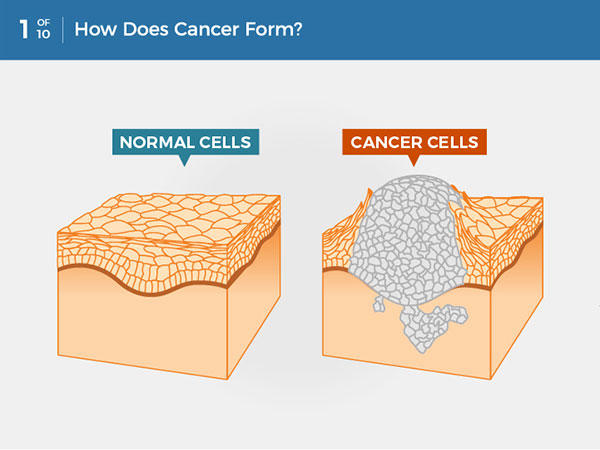
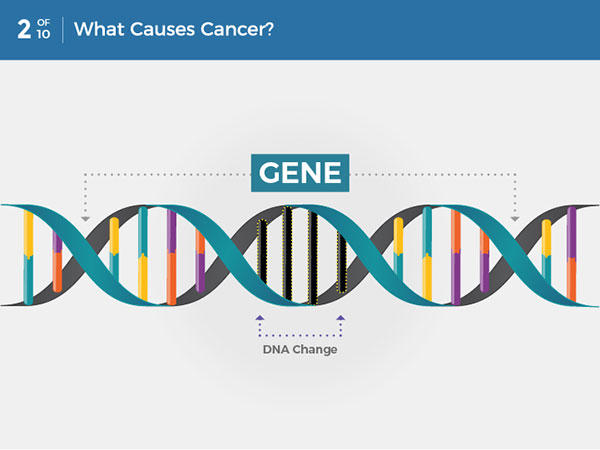
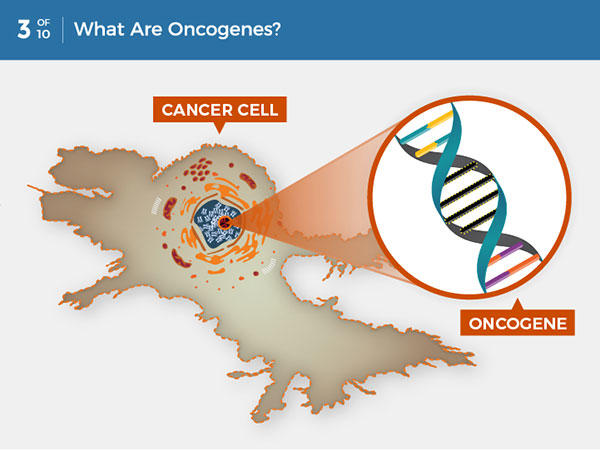
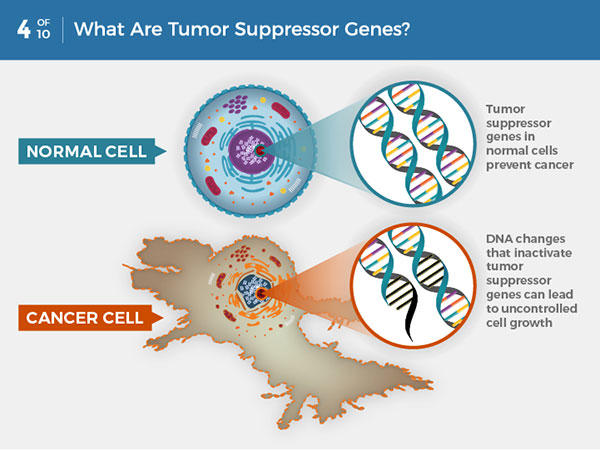
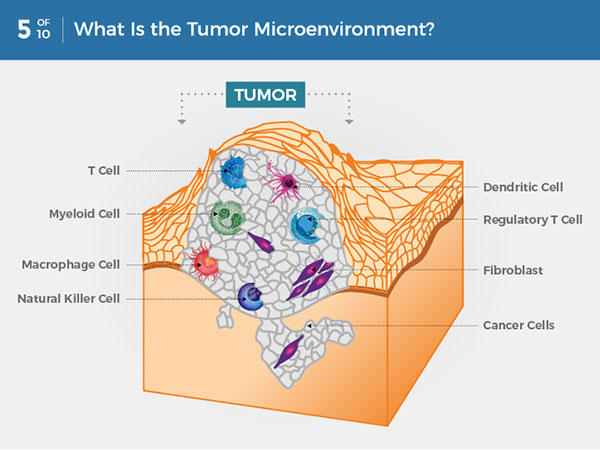
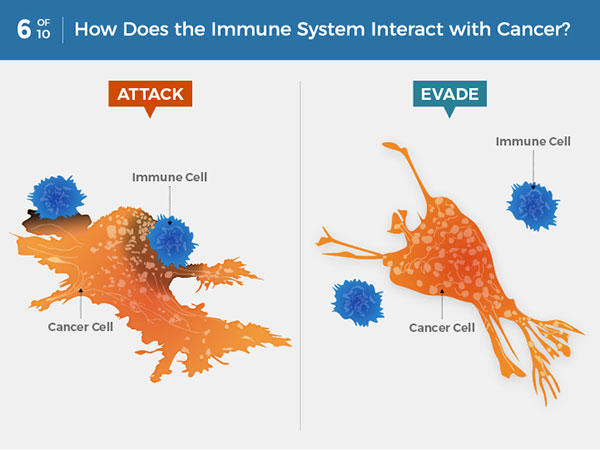
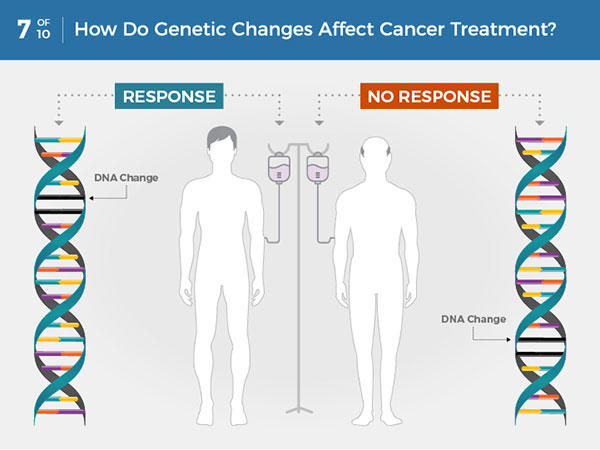
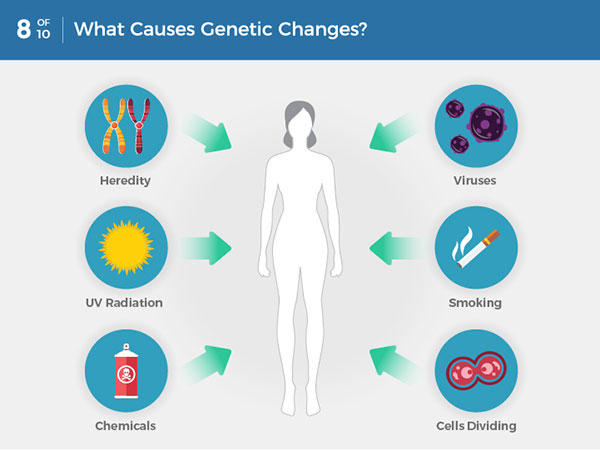
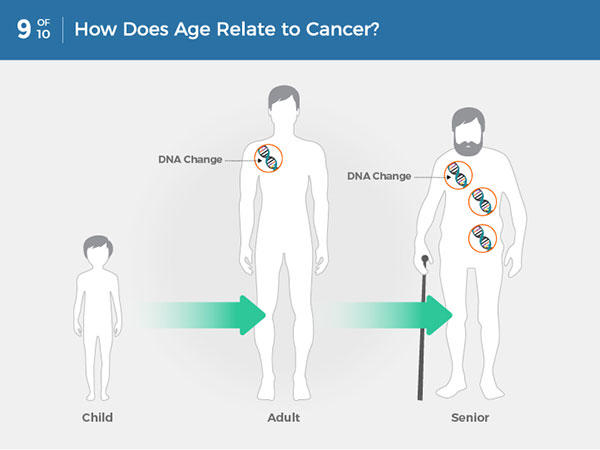
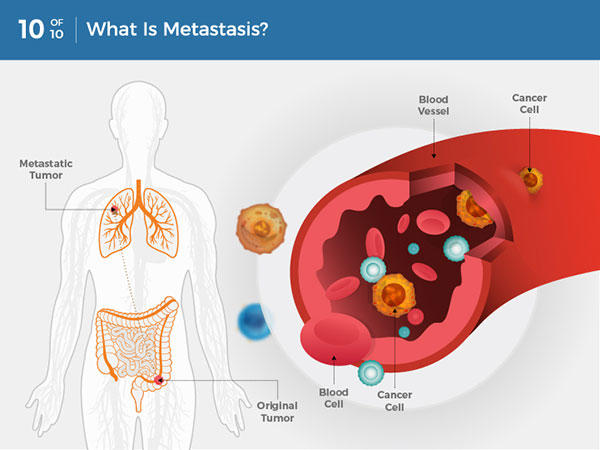
Treatment of Cancer
Cancer can be treated in several ways, depending on the type and stage of the cancer. Some common treatment options include surgery, chemotherapy, radiation therapy, and immunotherapy. Surgery involves removing the tumor and surrounding tissue, while chemotherapy and radiation therapy use drugs and high-energy radiation to kill cancer cells. Immunotherapy involves using drugs that help the body’s immune system to identify and attack cancer cells.
The goal of cancer treatment is to eliminate cancerous cells while minimizing damage to healthy cells and tissues. In some cases, a combination of different treatment options may be used to achieve the best possible outcome. Cancer treatment can be complex and challenging, and there is no one-size-fits-all approach. Treatment plans are tailored to the individual patient and may involve a multidisciplinary team of medical professionals. Regular check-ups and monitoring are also important to ensure that the cancer does not return or spread.
Most commonly used methods and techniques used in cancer treatment:
- Surgery: This involves removing the cancerous tumor and surrounding tissue to prevent the cancer from spreading.
- Chemotherapy: A treatment that involves using drugs to kill cancer cells or slow their growth. Chemotherapy can be administered orally or intravenously.
- Radiation therapy: A treatment that uses high-energy radiation to kill cancer cells or shrink tumors.
- Immunotherapy: A treatment that uses the body’s immune system to fight cancer cells. Immunotherapy has become a major focus of research, with drugs like checkpoint inhibitors and CAR T-cell therapy showing impressive results in clinical trials for a variety of cancers.
- Targeted therapy: A type of cancer treatment that targets specific molecules or pathways involved in the growth and spread of cancer cells.
- Hormone therapy: A treatment that uses drugs to block or remove hormones that contribute to the growth of certain types of cancer.
- Stem cell transplant: A treatment that involves replacing damaged or diseased stem cells with healthy ones to help the body produce new blood cells.
- Palliative care: A type of care that aims to improve the quality of life for people with advanced or terminal cancer by managing symptoms and providing emotional and spiritual support.
- Precision medicine has also become increasingly important, with genetic testing and targeted therapies allowing doctors to tailor treatment to an individual patient’s tumor.
Repurposing Existing Medicines and Vaccines for Cancer Treatment: Promising Strategies and Breakthroughs
Some already existing medicines and vaccines that were developed for other diseases are showing promise in the treatment of cancer. This is because cancer cells have some similarities with cells in the immune system, and certain drugs and vaccines that were originally developed to boost the immune response against infectious diseases can also help the immune system recognize and attack cancer cells.
Here are a few examples:
- Bacillus Calmette-Guérin (BCG) vaccine: This is a vaccine that was developed to protect against tuberculosis. It has been found to be effective in treating bladder cancer by stimulating the immune system to attack cancer cells in the bladder.
- Aspirin: Aspirin is a common pain reliever that has been found to reduce the risk of colon cancer. It works by reducing inflammation and blocking the production of prostaglandins, which can promote the growth of cancer cells.
- Tamoxifen: Tamoxifen is a drug that was developed to treat breast cancer. It works by blocking the effects of estrogen, which can promote the growth of breast cancer cells.
- Metformin: Metformin is a drug that is used to treat type 2 diabetes. It has been found to reduce the risk of some types of cancer, including breast, colon, and prostate cancer. It works by reducing insulin levels, which can help to slow the growth of cancer cells.
- Checkpoint inhibitors: Checkpoint inhibitors are a class of drugs that were developed to treat certain types of cancer, including melanoma and lung cancer. They work by blocking proteins that help cancer cells evade detection by the immune system.
- The polio vaccine has been found to be useful in the treatment of certain types of cancer, particularly glioblastoma, a type of brain cancer. The vaccine contains a weakened form of the poliovirus, which is able to infect and kill cancer cells without causing disease in healthy cells. The idea of using the polio vaccine as a cancer treatment is based on the fact that some cancers have a molecule called CD155 on their surface, which the poliovirus uses to infect cells. Researchers have developed a modified form of the poliovirus that can target cancer cells that express CD155 while leaving healthy cells unharmed. In clinical trials, the polio vaccine has shown promise as a treatment for glioblastoma, a highly aggressive and often fatal form of brain cancer. In one study, patients who received the vaccine in combination with chemotherapy and radiation therapy had significantly longer survival times than patients who received chemotherapy and radiation therapy alone.
drugs that target neurotransmitters such as serotonin and dopamine have been found to have anti-cancer properties. These drugs can interfere with the signaling pathways that allow cancer cells to grow and divide, and they may also stimulate the immune system to attack cancer cells.
Additionally, some brain-related medications have been found to have beneficial effects in managing the side effects of cancer treatment, such as chemotherapy-induced nausea and vomiting, fatigue, and pain. The use of brain-related medications in cancer treatment is still in the early stages of research, and more studies are needed to fully understand their potential benefits and risks. As with any cancer treatment, it is important to work closely with a healthcare professional to determine the most appropriate and effective treatment plan.
Research labs and companies around the world that are working on finding new cancer treatments and improving cancer detection methods:
In India:
- Tata Memorial Centre: Tata Memorial Centre (TMC) is a comprehensive cancer center located in Mumbai, India. TMC is involved in a wide range of activities related to cancer, including patient care, research, education, and training. TMC conducts clinical trials to evaluate new cancer treatments, and its researchers work to develop new diagnostic tools and therapies for different types of cancer.
- Indian Council of Medical Research (ICMR): The Indian Council of Medical Research (ICMR) is a premier research organization in India that is dedicated to the promotion of biomedical research and the development of innovative treatments for a wide range of diseases, including cancer. The ICMR plays a vital role in the development and implementation of cancer prevention and control programs in India and is involved in research collaborations with leading academic institutions and other organizations to advance the understanding of cancer and develop new and more effective treatments for the disease. The ICMR is also responsible for the development of national guidelines for cancer prevention, diagnosis, and treatment, and plays a key role in the coordination of cancer research and treatment efforts across India.
- National Institute of Cancer Prevention and Research (NICPR): The National Institute of Cancer Prevention and Research (NICPR) is an autonomous institute under the Indian Council of Medical Research (ICMR) that is dedicated to the prevention and control of cancer in India. The NICPR conducts research on the causes of cancer, risk factors, prevention strategies, and early detection methods. The institute is also involved in the development of national cancer prevention and control policies and programs and provides technical assistance to various government and non-government organizations working in the field of cancer prevention and control. The NICPR’s research activities include the study of cancer epidemiology, genetics, molecular biology, and immunology, and the institute has made significant contributions to the development of innovative cancer prevention and control strategies in India.
- Cancer Research Institute, SRMC, Chennai: The Cancer Research Institute at the Sri Ramachandra Medical College (SRMC) in Chennai, India is a leading research institute focused on the prevention and treatment of cancer. The institute conducts cutting-edge research on the biology of cancer, as well as on the development of innovative diagnostic and treatment approaches for a wide range of cancers. The Cancer Research Institute at SRMC is home to a team of highly qualified and experienced researchers who are dedicated to advancing the understanding of cancer and developing new and effective treatments for the disease. The institute collaborates with leading cancer centers and research institutions around the world and has made significant contributions to the field of cancer research and treatment. The Cancer Research Institute at SRMC is committed to improving the lives of cancer patients through the development of new and innovative cancer treatments and therapies.
- All India Institute of Medical Sciences (AIIMS): The All India Institute of Medical Sciences (AIIMS) is a prestigious medical institution located in New Delhi, India that is dedicated to the advancement of medical education, research, and patient care. The institute has a dedicated department of oncology that is focused on the diagnosis, treatment, and prevention of cancer. The department is staffed by highly skilled and experienced oncologists who are experts in the latest diagnostic and treatment techniques for a wide range of cancers. The AIIMS oncology department is also involved in research activities aimed at improving our understanding of the biology of cancer and developing new and more effective treatments for the disease. The department collaborates with leading cancer research institutions and hospitals around the world and has made significant contributions to the development of innovative cancer treatments in India. The AIIMS oncology department is committed to providing the highest quality of care to cancer patients and improving outcomes for those affected by the disease.
In the world:
- National Cancer Institute (NCI): The National Cancer Institute (NCI) is a U.S. government agency that is part of the National Institutes of Health. NCI is the largest funder of cancer research in the world and supports a wide range of research activities, including basic research, clinical trials, and the development of new cancer drugs and therapies.
- American Association for Cancer Research (AACR): The AACR is a professional organization for cancer researchers that is dedicated to promoting cancer research, education, and advocacy. The organization publishes several scientific journals related to cancer research and hosts an annual conference that brings together cancer researchers from around the world to share their findings and collaborate on new research projects.
- Memorial Sloan Kettering Cancer Center: Memorial Sloan Kettering Cancer Center is a leading cancer center located in New York City. The center offers a wide range of cancer treatment options, including chemotherapy, radiation therapy, immunotherapy, and targeted therapies. Its researchers are also involved in developing new cancer treatments and improving cancer detection methods.
- MD Anderson Cancer Center: The MD Anderson Cancer Center is one of the world’s most renowned cancer treatment and research centers. Located in Houston, Texas, the center is dedicated to the mission of eliminating cancer through innovative research, patient-centered care, and education. With a team of more than 21,000 professionals, including over 1,500 faculty members, the center is committed to advancing the understanding of cancer and developing new and effective treatments for the disease. MD Anderson Cancer Center offers a wide range of specialized cancer care services, including diagnosis, treatment, and supportive care, to patients from around the world. The center’s approach is highly collaborative, with experts from different disciplines working together to provide the most comprehensive and personalized care possible. In addition to its clinical services, MD Anderson Cancer Center is also a leader in cancer research, with a focus on translational research that aims to bring promising new treatments from the laboratory to the clinic. The center’s research programs cover a wide range of areas, from basic science to clinical trials, and are supported by a robust infrastructure that includes state-of-the-art research facilities and a team of dedicated scientists and clinicians.
- Dana-Farber Cancer Institute: The Dana-Farber Cancer Institute is a leading cancer treatment and research center located in Boston, Massachusetts. Established in 1947, the institute is dedicated to the mission of curing cancer and related diseases through innovative research, personalized patient care, and education. With a team of more than 5,000 professionals, including over 1,000 physicians and researchers, Dana-Farber offers a wide range of specialized cancer care services, including diagnosis, treatment, and supportive care, to patients from around the world. The institute is committed to advancing the understanding of cancer through cutting-edge research programs that cover a wide range of areas, from basic science to clinical trials, and is known for its contributions to the development of breakthrough cancer treatments, including immunotherapy and targeted therapy. Dana-Farber Cancer Institute is also home to the Jimmy Fund, a fundraising organization that supports cancer research and patient care at the institute.
- Roche: Roche is a Swiss multinational healthcare company that is involved in a wide range of activities related to cancer. The company develops and markets cancer drugs and therapies, including targeted therapies, immunotherapies, and chemotherapy drugs. Roche is also involved in developing diagnostic tools for cancer, including genetic tests and imaging technologies.
- Novartis: Novartis’ portfolio of cancer drugs includes some of the most advanced and effective treatments available today, such as Gleevec, a targeted therapy for chronic myeloid leukemia, and Kymriah, a CAR-T cell therapy for certain types of leukemia and lymphoma. In addition to its drug development efforts, Novartis is also involved in research collaborations with leading academic institutions and other organizations and is committed to advancing the understanding of cancer and developing new and more effective treatments for the disease.
- Pfizer: Pfizer’s portfolio of cancer drugs includes some of the most advanced and effective treatments available today, such as Ibrance, a targeted therapy for breast cancer, and Xtandi, a therapy for prostate cancer. In addition to its drug development efforts, Pfizer is also involved in research collaborations with leading academic institutions and other organizations and is committed to advancing the understanding of cancer and developing new and more effective treatments for the disease.
- Merck & Co., Inc: Merck’s portfolio of cancer drugs includes several advanced and effective treatments, such as Keytruda, a targeted therapy that has shown promising results in treating several types of cancer, including lung cancer, melanoma, and bladder cancer. In addition to its drug development efforts, Merck is also involved in research collaborations with leading academic institutions and other organizations and is committed to advancing the understanding of cancer and developing new and more effective treatments for the disease.
- Bristol-Myers Squibb: Bristol-Myers Squibb’s portfolio of cancer drugs includes several advanced and effective treatments, such as Opdivo, a targeted immunotherapy that has shown promising results in treating several types of cancer, including lung cancer, melanoma, and bladder cancer. In addition to its drug development efforts, Bristol-Myers Squibb is also involved in research collaborations with leading academic institutions and other organizations and is committed to advancing the understanding of cancer and developing new and more effective treatments for the disease.
These are just a few examples of the many organizations that are dedicated to cancer research and treatment. There are many other labs, companies, and research institutions around the world that are also contributing to this important field.















One Response
Well written and perfectly structured article